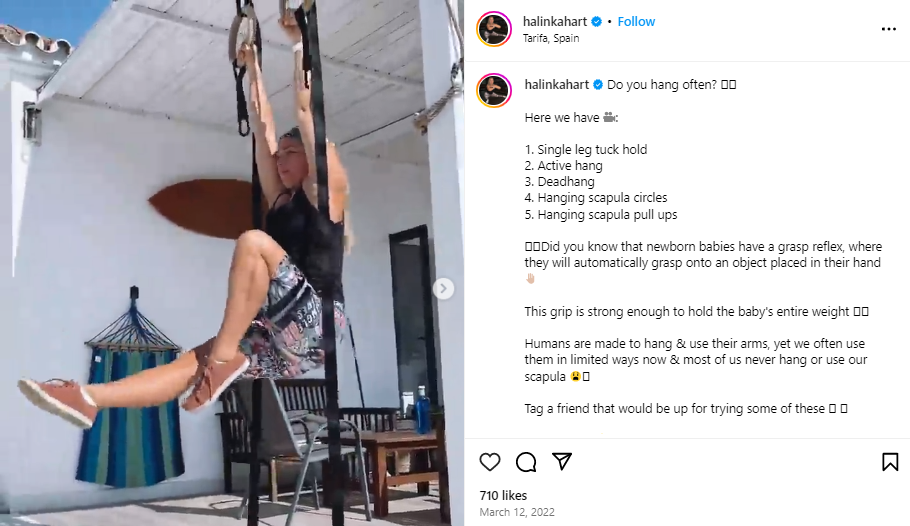Have you ever felt your grip slip during an intense workout, or struggled with simple tasks like opening a jar? This common challenge is actually a sign of an often-neglected aspect of physical fitness: grip strength. But worry not, we’re about to delve deep into this crucial topic and give it the attention it truly deserves.
Grip strength training, a key but often overlooked component of fitness, plays a vital role in both weight loss and advanced bodybuilding routines. It’s not just about having a firm handshake or impressive forearms.
This kind of training extends its benefits far beyond the gym, aiding in daily activities and overall strength development. In this article, we’re going to explore the multifaceted world of grip strength training, highlighting how it can amplify your workouts and lead to greater gains.
Table of contents
MORE keyboard_double_arrow_down LESS keyboard_double_arrow_up
What is Grip Strength Training?
Grip strength training goes beyond just squeezing stress balls or hand grips. It involves a series of exercises and techniques designed to strengthen the muscles in your hands, wrists, and forearms. This type of training is crucial because these muscles play a pivotal role in almost every upper body movement, both in the gym and in daily life.Why Grip Strength Training Matters
Now that we know what grip strength is, why exactly does it matter? Let’s take a look.- Boosts Bigger Lifts & Faster Muscle Growth: A firm grip enables you to control and lift heavier weights, particularly in exercises like bicep curls and deadlifts. This directly contributes to faster and more efficient muscle growth.
- Prevents Grip Failure & Injuries: A weak grip can lead to accidents, such as dropping weights, which could cause serious injury. By strengthening your grip, you reduce these risks significantly.
- Improves Shoulder Health: The 2016 study in the sports science journal Shoulder & Elbow showed that there’s a strong relationship between grip strength and shoulder health, indicating that a strong grip can lead to fewer shoulder-related injuries.
- Enhances Overall Performance: A stronger grip improves your performance across a wide range of exercises, giving you more control and power.
- Functional Strength Benefits: In daily life, a strong grip makes numerous tasks, from carrying groceries to opening jars, much easier and less taxing on your body.
- Confidence Booster: Knowing that you have a strong grip can boost your overall confidence, both in the gym and in daily life.
Best Exercises to Improve Grip Strength
Now, that we’ve covered the importance of training grip strength, you may wonder how to train grip strength. So, among the many grip strength exercises that are out there today, here are some that are very effective:- Deadlift : This fundamental exercise not only builds overall body strength but also improves grip endurance.
- Farmer’s Walks: This exercise is excellent for building both grip strength and overall endurance. It simulates real-life carrying tasks, making it highly functional.
- Plate Pinch: This simple yet effective exercise targets the often-neglected finger muscles, crucial for a strong grip.
- Meadows Rows: A variation of the traditional row, this exercise puts additional focus on the grip, challenging your forearms in a unique way.
- Kettlebell Swings: These not only work on your grip but also improve cardiovascular fitness and total body strength.
- Zottman Curl: This curl variation targets the biceps and forearms simultaneously, enhancing grip strength.
- Reverse Grip Barbell Curl: By reversing the grip, this exercise places more emphasis on the forearms, improving grip strength.
- Dead Hang: Simple yet challenging, the dead hang improves grip endurance, a critical aspect of grip strength.
- Press-Ups (Fingers Only): This advanced exercise strengthens the fingers, improving your grip’s fine motor control.
- Reverse Press-Up: By flipping the traditional press-up, this exercise provides a novel challenge to your grip and forearms.
How To Train Grip Strength at Home
If you’re someone that does not have time to train grip strength professionally, there are methods you can do from home with the help of simple objects. Here are few methods you can try:- Rice Gripping: A simple and effective exercise, rice gripping improves finger and hand strength through resistance.
- Book Pinching: An innovative way to use common household items for grip training, book pinching builds strength in the fingers and forearms.
- Door Hangers: This practical exercise uses the weight of your body to challenge your grip, improving endurance and strength.
What Do Experts Say About Grip Strength Training?
Grip strength, a fundamental aspect of overall fitness, is often underestimated. Let’s delve into the perspectives of experts in the field to understand its true importance.Dr. Joel Seedman’s Perspective
Dr. Joel Seedman, a well-respected Physical Therapist and Strength Coach for Olympic athletes, warns about the dangers of neglecting grip strength. He observes, “I often see athletes with impressive physiques who neglect their grip strength. But let your grip give out on a heavy deadlift, and you’re looking at a potential career-ending injury. Prioritizing grip training is an investment in your safety and your performance.” This statement underscores a critical aspect of grip strength – its role in ensuring safety and enhancing performance. In exercises like deadlifts, where the grip is crucial, a strong grip not only helps in lifting heavier weights but also prevents injuries that could halt an athlete’s career. Therefore, grip strength training is not just about enhancing performance; it’s about safeguarding an athlete’s future in sports.Emily Spedic’s Insights
Emily Spedic, a Certified Personal Trainer and author of “Strong Like Her,” highlights the everyday importance of grip strength, stating, “Grip strength is often overlooked, but it’s a crucial factor in everyday life, too. From opening stubborn jars to carrying groceries with ease, strong hands make a big difference. Don’t underestimate the power of a good grip workout!” Emily’s perspective brings to light the practical side of grip strength. It’s not only about athletic performance but also about the ease and efficiency in performing daily tasks. Strong grip strength simplifies numerous routine activities, making them less strenuous and more manageable. This insight highlights that grip strength training should be a part of everyone’s fitness routine, not just athletes or fitness enthusiasts.Insights from Hali Holeszowski
Hali Holeszowski, a Certified Strength & Mobility Coach, discusses the evolutionary aspect of grip strength in her Instagram posts. She points out that humans are naturally designed to use their arms and scapula for hanging and various activities.
Practical Advice and Tips
If you decide to pursue grip strength training, there are few things that you should keep in mind. They are as follows:- Starting Light: Begin with lighter exercises and gradually increase the resistance. This approach prevents injuries and helps build strength sustainably.
- Controlled Movements: Focus on maintaining control throughout your exercises. Avoid jerky or swinging movements to ensure maximum benefit and safety.
- Listening to Your Body: Pay attention to what your body tells you. If you experience any pain or discomfort, it’s crucial to stop and reassess your approach.
- Warming Up and Cooling Down: Just like any other workout, grip strength training requires proper warm-up and cool-down routines to prepare your muscles and prevent injuries.
Final Thoughts
Grip strength training is a pivotal component of a comprehensive fitness regimen. It not only enhances your ability to perform various exercises but also plays a significant role in daily activities. So, remember, in the journey to peak physical fitness, a strong grip is not just an advantage – it’s a necessity.Key Points
- Grip strength is vital for overall fitness and daily tasks.
- Exercises like deadlifts, farmer’s walks, and kettlebell swings are essential for building grip strength.
- Home-based exercises like rice gripping and book pinching are effective and convenient.
- Expert opinions emphasize the importance of grip strength in both athletic performance and everyday life.
- Starting with lighter exercises and progressively increasing intensity is key to effective grip strength training.
- Controlled movements ensure safety and efficacy in training.
- Listening to your body’s signals is crucial to avoid overtraining or injury.
- Proper warm-up and cool-down routines are essential in grip strength training.
- Consistent grip training leads to significant improvements in overall strength and functionality.
FAQs
Does grip strength training work? According to research and experts, grip strength training is indeed effective and it does work. However, it should not be your only method to improve your grip strength. Should you train grip strength everyday? If you want to increase your grip strength, you can use hand grips for 24 hours for weeks. This indicates that you should use hand grips for at least 2 hours a day. Does grip strength build muscle? Yes, it helps to build forearm muscles. However, fingers don’t have muscles. The muscle that helps to move your finger is situated on your palms and the forearms.References and Citations

ABOUT THE AUTHOR
Follow Valen Steven for a dose of fitness enthusiasm, evidence-based advice, and a roadmap to achieving your health and wellness goals.
Subscribe to our Newsletter
Dive into a world of fitness and wellness with our exclusive newsletter! Sign up now and receive weekly power-packs of fitness wisdom




